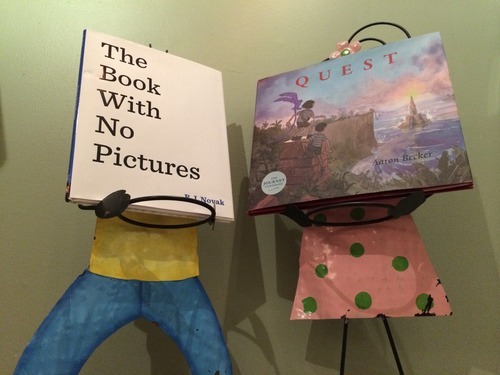To little ones, discovering the idea of literature and storytelling for the first time, stories are made up of pictures. And those pictures can detail anything – an adventure within a strange kingdom, a trip to the zoo, children climbing a tree – and still be something fantastic. Something that expands the spectrum of their world and infuses it with magic. For them, the story lies in illustrations. It creates the prose.
As those little ones grow older, these ideas begin to shape into something greater. Suddenly, the words matter. These children begin to mentally create those pictures themselves. And as that discovery takes flight, the storytelling can take a deeper root. It can open their minds to the endlessness of opportunity, of the ways they can grow, of the worlds they can create. They learn that words, much like pictures, have a beauty of their own and the power to build something real and important.
Authors and illustrators have begun to craft stories that give kids more credit. These stories allow children to begin thinking more critically at a younger age, introducing the importance of different forms of storytelling and how the possibilities for literary discovery are endless.
Two examples of this are The Book With No Picturesby B.J. Novak and Journey/Quest by Aaron Becker. Each take the idea of what literature is “supposed to be” and turn it on its head.

*
The Book With No Pictures by B.J. Novak
This book is a joy. It is silly, hilarious, captivating – and, as the title suggests, it has no pictures. Not one. And it doesn’t need them. Each page either creates a mental picture or creates a spectacle of the reader. Both options create a fun (and funny) interactive experience for a child. We read this book with our students and they couldn’t stop laughing – or commenting on the fact that they didn’t realize a book without pictures could be entertaining. Novak comments on that very sentiment in the first few pages of the book, reassuring the reader that this book isn’t serious, and most certainly isn’t boring. The suggested age range for this book is 5-8, but even our 3-year-olds were mesmerized. They wanted to know more, and even asked to read other books like The Book With No Pictures. This book has a simple concept, and in theory, should have been written years ago. But I’m glad it wasn’t, if only because I’m not sure anyone else could have accomplished this feat quite as gracefully as Novak. This book never condescends. It asks for open minds and many laughs, and the children deliver.
Journey/Quest by Aaron Becker
We first read Journey with our students last year (and even posted a review of it on this blog) and were hooked. The artwork is gorgeous and the concept of a book with no words, where the children have to create the story themselves, is a beautiful one. When we discovered that Journey was going to be a trilogy, we were ecstatic. Quest is even more fantastic than the first. The adventure is grander, the illustrations more lush, and the opportunities for deeper thinking even greater. Both Journey and Quest ask little ones to focus, imagine, and explore. These types of books are crucial for this age, as developing a child’s ability to concentrate, reflect, and deliberate young will help them as they prepare for preschool and kindergarten. Their critical thinking and learning skills will be set and able to be honed as they age. Journey and Quest are the perfect books for this type of activity, as the story set up is so exciting and the pictures so extraordinary that they won’t want the book to end.
*
Books are always important for the growth and development of our little ones. But books such as these – ones that not only tell the story at hand, but make us think more deeply about storytelling as a whole – can open new worlds for children and rejuvenate or create an unbreakable love of books.
